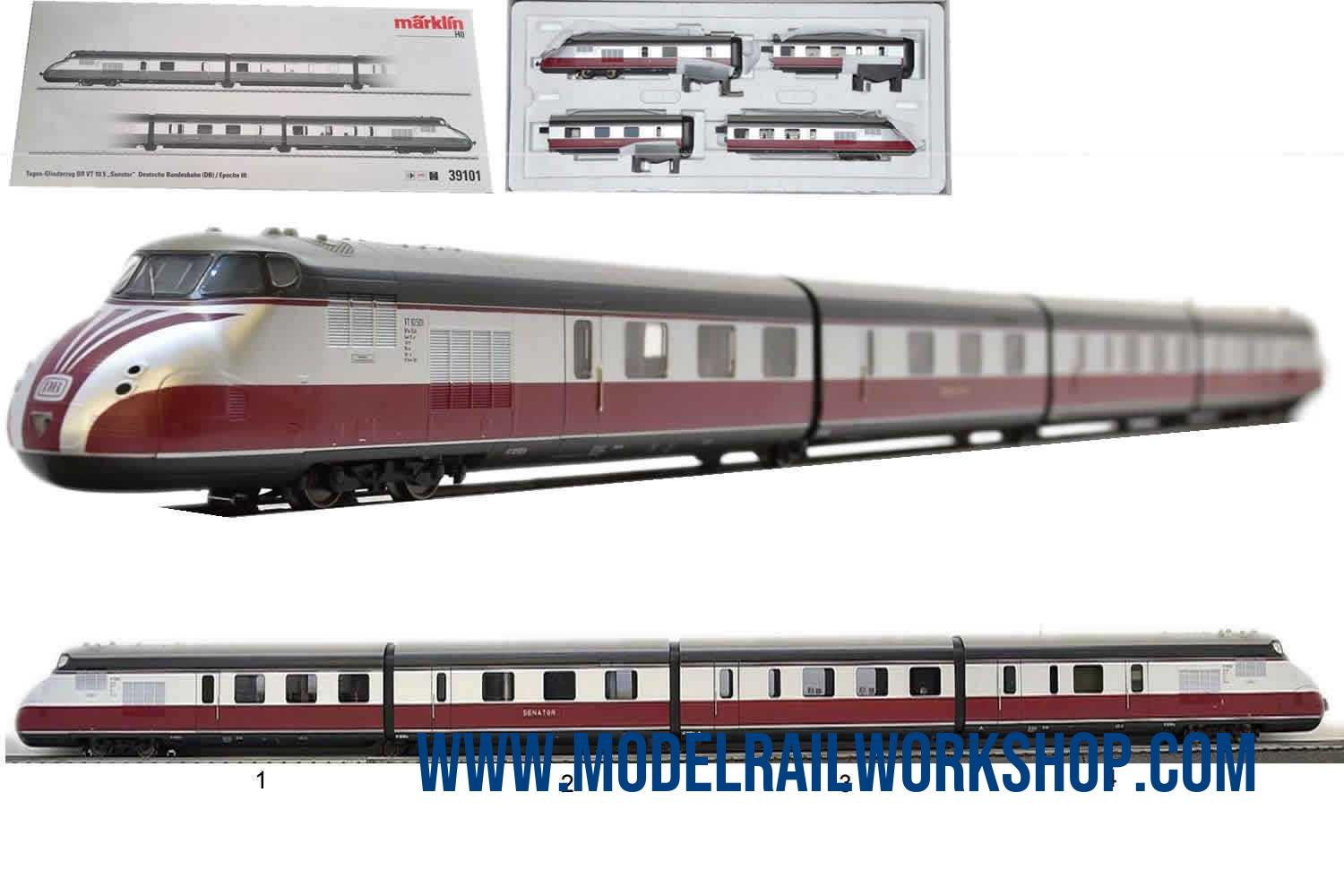
| KEY DATA | |
|---|---|
| Product Name | 39101 Diesel Powered Rail Car - class TEE VT 10.501 |
| Object type | Locomotive-Diesel |
| Product Line | Märklin |
| Era | 1945-1970 (III) |
| Manufactured years | 2012-2013 |
| Type of housing | Metal |
| Length | 59.1 cm |
| Technology | Digital 6090 MFX |
| Railway company | DE-DB |
| Märklin RRP (Year) | 600€ (2012) |
| Koll valuation (Year) | 410€ (2022) |
| Url to Märklin | Klick to GoTo www.maerklin.de |
| No | Obj.No | Obj.txt | Category | Description |
|---|---|---|---|---|
| 39101-1 | 10501 | DB | VT 10-501 | Engine car with Passenger area |
| 39101-2 | - | SENATOR | VT 10-501 | Passenger car - |
| 39101-3 | - | - | VT 10-501 | Passenger car |
| 39101-4 | 10501 | DB | VT 10-501 | Engine car with Passenger area and control area |
| Description | |
|---|---|